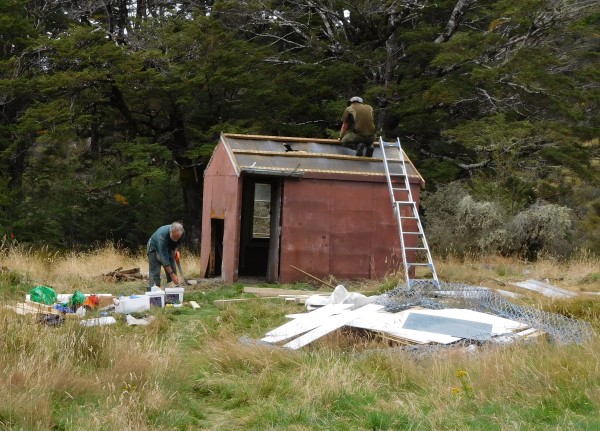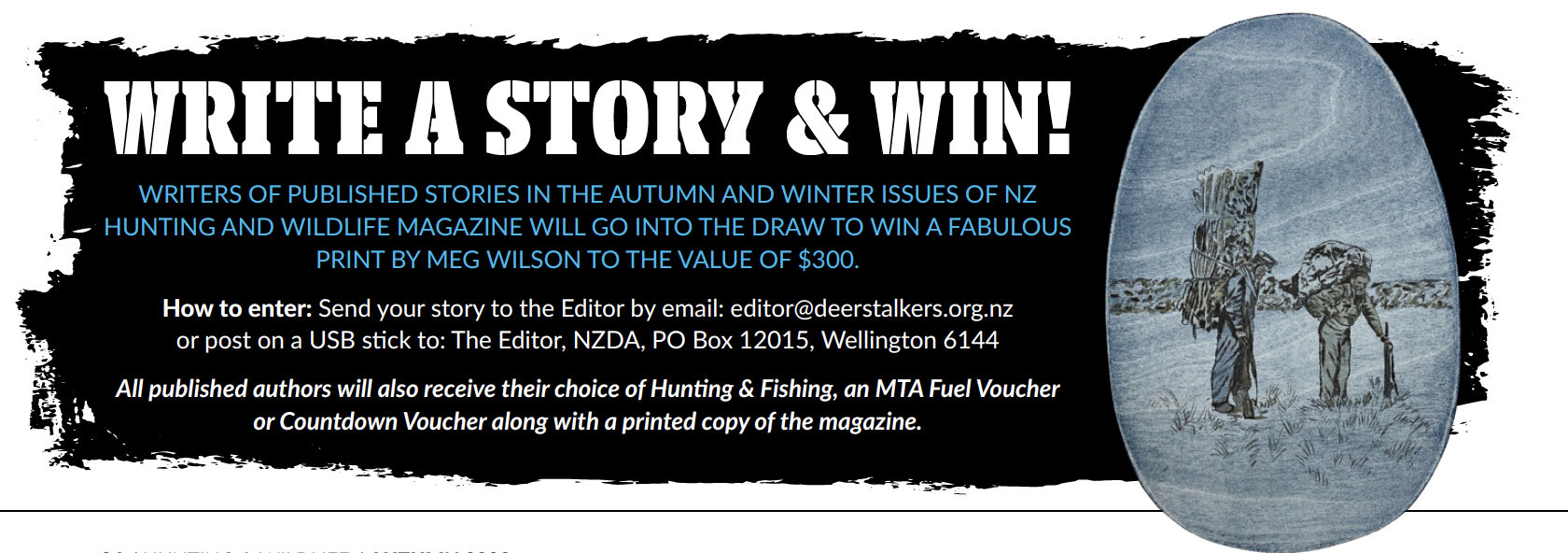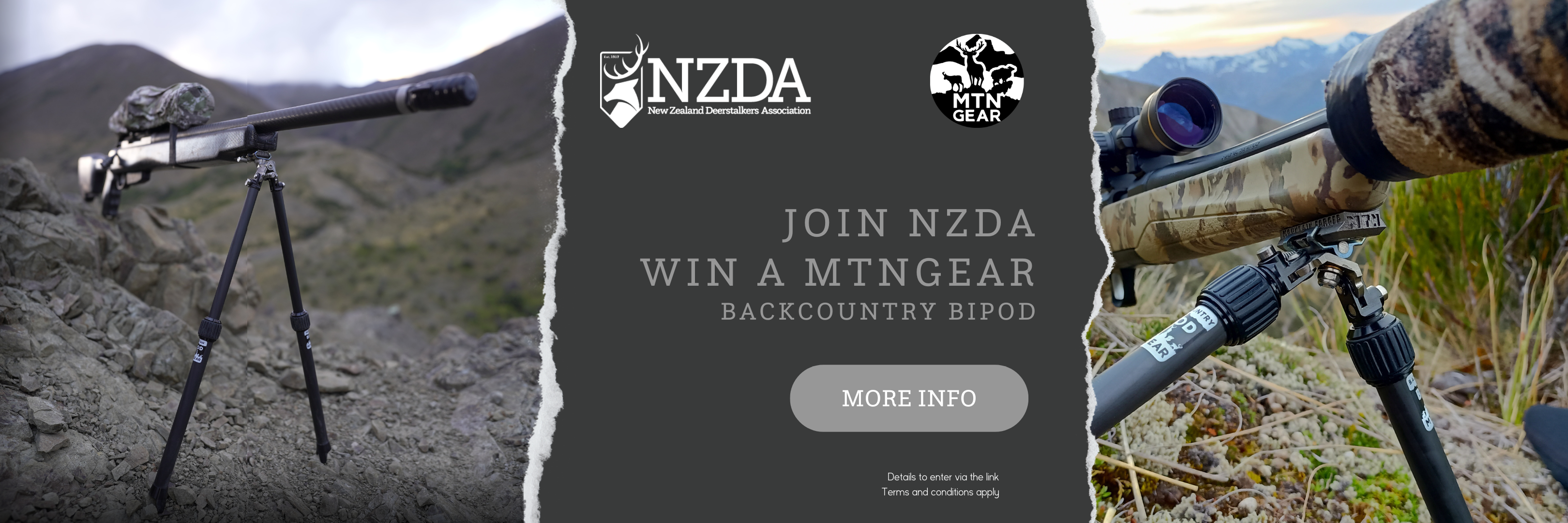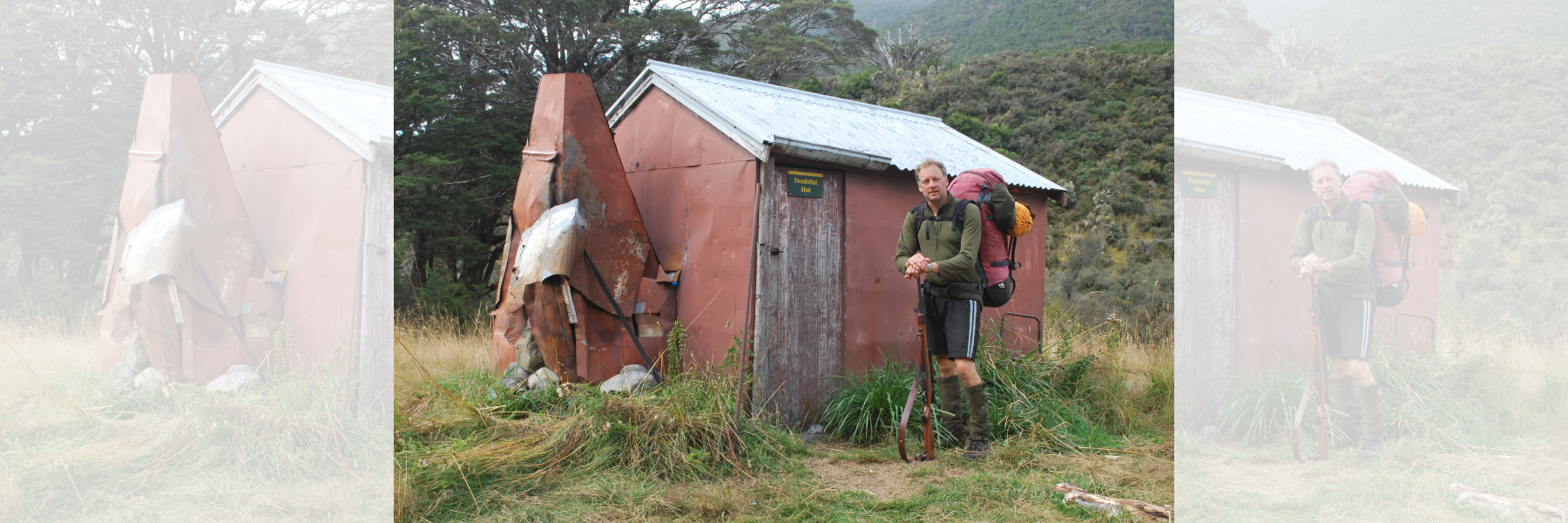Restoration Project Doubtful Hut: Lewis Pass
21 December
Hunting and Wildlife Magazine - Issue 217 Winter
Words By: David Hodder
A project to restore the Doubtful Hut in the Lewis Pass was offered to the North Canterbury Branch by the Backcountry Trust and seemed a straight- forward project. However, Department of Conservation hut policies, a change in hut classification – from Basic to Heritage, and the building governance authority now being with the Local Body (i.e. the Hurunui District Council - Amberley office) it became anything but straight – forward!
Access - you must ford the Boyle River just above Engineers Camp on SH7, between the turnoff to Hanmer Springs and Lewis Pass. It’s a 2.5 hr walk from SH7, of approx. 6 km.
I walked in for an inspection and measure-up with team member Nigel Grant and found a 1950’s tin two-bunk bivvy with a corrugated iron roof in a nice little flat clearing above the stream. It had a rusted out and bent fireplace and chimney that had been built on the ground. It had one opening window opposite the doorway, a home-made sliding vent hole in the back wall, and a recently installed fibreglass ECO toilet approx. 40m away in the matagouri. I returned a few weeks later with Zeff Veronese (a man with relevant metal trade experience) to assess whether the fireplace and chimney was repairable. One look at it and he said, “no way”!
The thinking was that we could improve the hut by fitting in another bunk and new mattresses plus installing a very small log/twig burner using a locally made (Spiroloc) stainless steel Thermette burner designed for boats and caravans/motor homes.
I then contacted the Amberley office for a permit for the wood burner. They asked for the burner registration details and an application form. They then wrote asking for a letter from the DG of Conservation requesting a dispensation for not providing a means of wheelchair access.
I thought – HELLO – HELLO – this is not a good start!
I then started to seriously look at building a new hut – like the six bunk huts that John Delury and Co were building with DOC and local county consent, on Stewart Island. Unfortunately, the costs had risen, and DOC and the Backcountry Trust considered it too expensive for the Doubtful Hut project budget.
Parallel to this I had been designing a replacement fire unit to attach to the hut where the old metal fireplace/chimney had been. This soon became a ‘nonstarter’ when I was told that the new policy for small huts was now – no fireplace! About the same time, I was advised that a newly formed Heritage Committee had decide to place the hut on the Heritage Hut list. This meant that little or no alterations could be made to the original hut. This resulted in our off-site construction of a timber-framed fire-cupboard in member Jack van der Knapp’s workshop in Amberley having to cease. We flat packaged it up and gave it to the DOC Rangiora workshop for possible use on their Mainland Island predator control project in the South Branch of the Hurunui River.

A huge amount of work was carried out over a long weekend giving the Doubtful Hut another lease of life in an area that sees a lot of hunters and trampers travelling the Doubtful Valley.
This resulted in ordering a suitable-sized sheet of galvanised steel to cover the hole in the hut wall where the old, rusted fireplace and chimney had been, plus strengthening the iron with a treated timber dwang. The main work was replacing the floor plate timbers around the whole perimeter of the hut with treated timber, plus attaching suitable galvanised plates to the new timber for concreting into the new floor repair points. Other work included installing a third bunk, replacing bed slates with plywood sheets, removing the roof iron and cleaning and priming under the shelter of a tent fly strung under the nearby grove of beech trees. It usually tries to rain as soon as you try and paint a roof!
The corrugated iron sheets were given a wire brush and a first white coat before reinstating onto the roof purlins with galvanised hex screws after repairing a few broken roof beams. A thin sheet of polystyrene was slipped under the iron before the ridging and end flashings were re-installed. We dug a shallow trench around the hut perimeter to drain the water away from the new timber bottom plate.
Transport – the initial small advance party was Warren Hall walking in to remove the broken chimney and fireplace and start removing the bunk timbers. The Amuri Co. Squirrel helicopter’s first load from the Poplars Station on Saturday morning was a net full of materials and tools, with the second load being packs and people, then another load of people and some gear. Warren got a ride out on an empty return flight, as he had other commitments that weekend. The last load going out on Sunday of tools/mats/packs was by a Robertson R44 while the rest of us walked the 2.5 hours. I returned during the week with a trailer and picked up the rest of the rubbish and left-over materials.
Roof repaint – Myself and Lynsay Savin walked into the hut a fortnight later, in fine weather, and put a second coat of paint on the roof, door and walls. There is still plenty of red paint left in the hut, plus some cement.
Post project repairs – somebody reported to DOC that the hut door had been wrenched open the wrong way and wasn’t closing properly. Myself and Warren Hall went back in on a fine frosty May day with a length of 3 x 2, saw, hammer and screws and installed a second door stud, and created a door stop.
Restoration Team members: Warren Hall (advance party), Keith Morrison (heavy transport), Nigel Grant, Dick Piercy, Alan Hodges, Lance Roper and son DJ, Jack van der Knapp (carpenter – made the two stools as well),
Write for Hunting and Wildlife

Join NZDA To Help Us Advocate on Your Behalf



